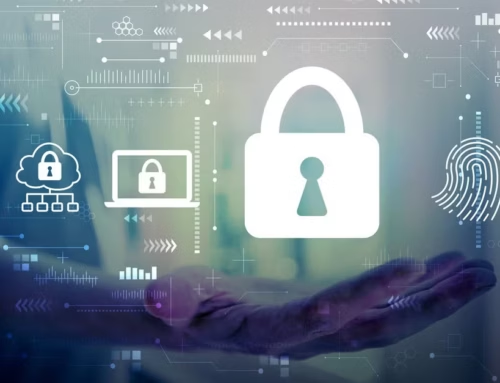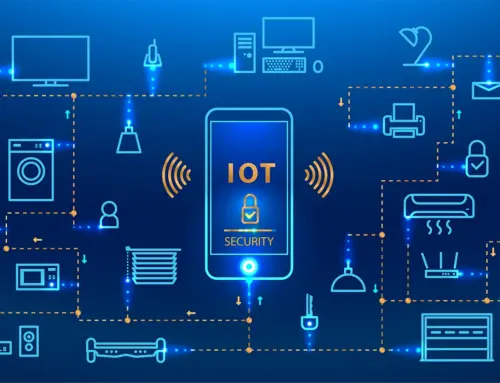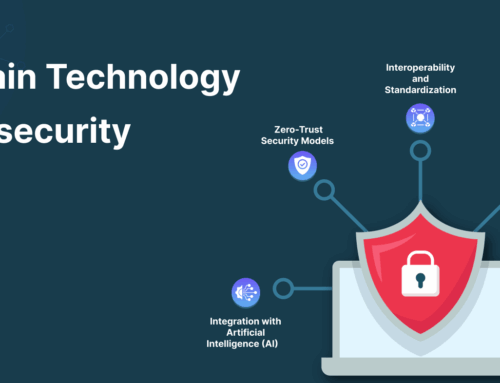
Protecting Digital Twins From Cyber Threats.
Cyber Protecting Digital Twins From in Cybersecurity: Securing Cyber’s Future Threats
In an era where cyber threats are evolving at an unprecedented pace, the need for robust cybersecurity strategies has never been more critical. Teamwin Global Technologica is committed to safeguarding your enterprise and ensuring tomorrow’s success through the innovative application of digital twin technologies. These technologies offer a transformative approach to cybersecurity, enhancing security measures and fortifying businesses against potential security incidents. Our authoritative and customer-centric approach ensures that your infrastructure is not only secure but also resilient, providing peace of mind and empowering your business to thrive in the digital age.
Understanding Digital Twins in Cybersecurity
What are Digital Twins?
A digital twin is a virtual replica of a physical system, seamlessly integrating digital and physical environments to provide a comprehensive digital model. This advanced technology allows for real-time monitoring and analysis, enabling organizations to anticipate and address cybersecurity challenges effectively. By simulating the physical system within a digital twin environment, businesses can gain valuable insights into their operations, enhancing their security posture and enabling proactive incident response strategies. As cybersecurity threats become more sophisticated, digital twins offer a powerful tool for understanding and mitigating risks, ensuring that your organization’s infrastructure remains secure and resilient.
The Role of Digital Twins in Cybersecurity
Digital twins play a pivotal role in cybersecurity by providing a virtual environment where security policies can be tested and refined. They enable security teams to simulate cyber attacks and assess security risks without compromising the actual system. This application of digital twins allows for enhanced security testing and incident response planning, ensuring that security controls are robust and effective. By integrating digital twins into cybersecurity frameworks, organizations can improve their security posture, anticipate potential threats, and implement comprehensive security solutions that protect against both current and future cyber risks.
Benefits of Digital Twins in Cybersecurity
The integration of digital twins for cybersecurity offers numerous benefits, including the ability to fortify your business against potential threats and enhance your overall security system. Digital twins allow for a detailed security assessment and the development of tailored cybersecurity measures, ensuring that your organization is prepared to mitigate cyber risks effectively with robust security protocols. By providing a secure digital environment for testing and validation, digital twins enable security teams to identify vulnerabilities and implement targeted security strategies. This proactive approach not only reduces the likelihood of security breaches but also ensures that your enterprise’s integrity remains uncompromised, delivering value for money and peace of mind.
Cybersecurity Risks and Threats
Identifying Cybersecurity Threats
In today’s interconnected digital landscape, identifying cybersecurity threats requires a comprehensive understanding of the myriad potential risks that organizations face, especially in traditional cybersecurity. The integration of digital twin technologies provides a sophisticated means to detect and analyze cyber threats through the creation of a virtual replica of the organization’s physical system. This digital model enables security teams to simulate various attack scenarios in a controlled environment, offering insights into how threats might manifest and evolve. By employing artificial intelligence and machine learning, digital twins enhance the ability to predict and recognize patterns indicative of potential cyber threats, allowing for more effective cybersecurity measures. This proactive approach empowers organizations to address vulnerabilities before they can be exploited, ensuring the safety and integrity of their digital infrastructure through effective security protocols.
Common Cybersecurity Risks
Organizations today face a plethora of cybersecurity risks, each posing significant challenges to their operational integrity. Common risks include unauthorized access, data breaches, malware attacks, and insider threats, all of which can have severe repercussions if not properly managed. The use of digital twins in cybersecurity provides a robust framework to identify and mitigate these risks. This approach offers two main benefits: improved data security and enhanced security protocols.
- Enhanced security testing, allowing security teams to assess their security posture within a secure digital twin environment.
- Incident response planning, which helps identify weak points in security systems and implement targeted security solutions.
This thorough security assessment, facilitated by digital twins, ensures that comprehensive security measures are in place to protect against both current and emerging cybersecurity risks.
Impact of Cyber Threats on Organizations
The impact of cyber threats on organizations can be profound, affecting not only financial stability but also reputational integrity and operational continuity. A security breach can lead to loss of sensitive data, regulatory penalties, and a diminished trust from customers and stakeholders. However, by leveraging the application of digital twins in cybersecurity, organizations can significantly reduce these impacts. Digital twins enable the simulation of cyber attacks, providing a virtual environment where security strategies can be tested and refined without affecting the actual system. This capability allows for the identification of potential threats and the implementation of effective security controls, ultimately enhancing the organization’s resilience against cyber threats. By taking a proactive stance using digital twin technologies, businesses can ensure their infrastructure remains secure, safe, and reliable in the face of evolving cybersecurity challenges.
Enhancing Cybersecurity with Digital Twins
How Digital Twins Enhance Cybersecurity
The integration of digital twins within cybersecurity frameworks represents a groundbreaking advancement in safeguarding digital infrastructures. These virtual replicas of physical systems provide a sophisticated approach to preemptively managing cyber threats using a digital twin system. By leveraging the power of digital twins, organizations are able to conduct thorough security assessments in a virtual environment, simulating potential cyber attacks and evaluating their security posture without risking actual systems. This proactive stance allows for the refinement of security strategies and the implementation of robust security measures, ensuring that both current and emerging threats are effectively addressed. Through the application of digital twin technologies, businesses can enhance their cybersecurity measures, making them more resilient and less susceptible to cyber vulnerabilities.
Case Studies: Digital Twins in Action
Numerous real-world applications underscore the efficacy of digital twins in enhancing cybersecurity.
| Application | Outcome of employing a digital twin system in enhancing data security. |
|---|---|
| A leading financial institution used digital twins to simulate potential cybersecurity threats. | Identified vulnerabilities in their network infrastructure, allowing targeted security solutions and reducing the risk of data breaches. |
| A manufacturing company employed digital twin technologies to create a digital model of their production systems. | Anticipated and mitigated cyber risks through a virtual model, ensuring uninterrupted operations and safeguarding sensitive data. |
These case studies illustrate how digital twins empower security teams to adopt a proactive approach, fortifying businesses against potential threats and ensuring operational integrity.
Future Trends in Digital Twin Technologies
As digital twin technologies continue to evolve, their application in cybersecurity is expected to expand significantly. Future trends suggest a deeper integration of artificial intelligence and machine learning within digital twin frameworks, enhancing the ability to detect and respond to cybersecurity threats in real-time. Key developments in this area include:
- The development of more sophisticated digital models will enable organizations to simulate increasingly complex cyber attack scenarios, providing valuable insights into potential vulnerabilities.
- The rise of the Internet of Things (IoT) will drive the demand for digital twins, as more interconnected devices require robust cybersecurity measures.
As these technologies advance, digital twins will play an increasingly critical role in ensuring the security and resilience of digital infrastructures, empowering businesses to navigate the ever-changing cybersecurity landscape with confidence and assurance in their security and privacy measures.
Digital Twin Security and Incident Response
Implementing Digital Twin Security Measures
In the realm of cybersecurity, implementing robust digital twin security measures is crucial for safeguarding digital infrastructure against evolving cyber threats. Digital twin technologies enable organizations to create a virtual replica of their physical systems, allowing for an in-depth security assessment without exposing the actual environment to risk. This integration of digital twins facilitates the simulation of potential security threats within a controlled digital twin environment, where security strategies and solutions can be tested and optimized effectively. By employing artificial intelligence within these digital models, organizations can identify vulnerabilities and strengthen their security posture proactively. This comprehensive approach ensures that cyber security measures are not only robust but also adaptable to emerging threats, enhancing overall resilience and reliability in the face of ever-evolving cybersecurity challenges.
Incident Response Strategies Using Digital Twins
Incident response is a critical component in the cybersecurity framework, and the application of digital twins plays a pivotal role in enhancing these strategies. By utilizing digital twins, security teams can simulate cyber attacks in a secure digital environment, allowing for a detailed analysis of potential threats and the development of effective response strategies. This proactive use of digital twin technologies enables organizations to refine their incident response plans, ensuring swift and decisive action in the event of a security breach. The virtual environment provided by digital twins allows for the testing of various incident response tactics, empowering security teams to anticipate and mitigate cyber risks efficiently. With digital twins, incident response becomes a more dynamic and informed process, enabling organizations to protect their infrastructure with confidence and assurance.
Improving Security Posture with Cyber Digital Twins
Enhancing an organization’s security posture is imperative in the fight against cybersecurity threats, and Cyber digital twins are instrumental in achieving this goal of enhancing data security and improving security policies.. By integrating digital twin technologies, organizations can conduct comprehensive security testing, thereby identifying and addressing security risks proactively. Digital twins offer a virtual environment where security strategies can be evaluated and refined, ensuring that security controls are both effective and resilient against potential threats. This integration of digital twins for cybersecurity allows for continuous monitoring and improvement of security systems, providing a robust defense against cyber attacks. By leveraging the power of digital models, organizations can maintain a secure and adaptive security posture, safeguarding their physical and digital assets and ensuring operational continuity in a rapidly evolving threat landscape.
5 Surprising Facts About Protecting Digital Twins from Cyber Threats
- Digital twins can be more vulnerable than traditional systems due to their real-time data exchange, making them attractive targets for cyber attackers.
- Many organizations underestimate the importance of cybersecurity in digital twin implementations, often prioritizing functionality over security.
- AI and machine learning can enhance the security of digital twins by detecting anomalies and potential breaches in real-time.
- Regular software updates and patch management are crucial for maintaining the security of digital twins, yet many companies neglect this aspect.
- Collaborative security measures, involving multiple stakeholders, are often more effective in protecting digital twins than isolated security efforts.
What are digital twins and how do they enhance cybersecurity?
A digital twin is a virtual representation of a physical system, allowing organizations to simulate and analyze their physical assets and their digital counterparts. By using digital twins, cybersecurity teams can enhance cybersecurity measures by identifying vulnerabilities and potential cyber threats within the digital twin environment before they affect the physical system.
How can organizations use digital twins to protect against cybersecurity threats?
Organizations can use digital twins to create simulations of their physical assets, allowing cybersecurity professionals to test security measures and assess the security posture. This proactive approach enables security teams to anticipate sophisticated cyber threats and devise strategies to mitigate them effectively.
What are the cybersecurity risks associated with digital twins?
While digital twins enable organizations to enhance digital transformation, they also introduce cybersecurity risks such as data breaches and security incidents. If security measures are not properly implemented, cyber attacks can exploit vulnerabilities within the digital twin system, compromising both digital and physical environments.
What security measures can be implemented to secure digital twins?
To secure digital twins, organizations should implement comprehensive security solutions including security protocols, regular security assessments, and incident response plans. Additionally, integrating advanced technologies such as artificial intelligence can help in monitoring and responding to potential threats in real-time.
How do cybersecurity teams use digital twins to improve their security strategies?
Cybersecurity teams use digital twins to simulate potential cyber risk scenarios and evaluate the effectiveness of different security strategies. This approach allows them to refine their security management practices, ensuring they are prepared to handle the evolving landscape of cyber threats.
What is the role of digital twins in incident response planning?
Digital twins play a crucial role in incident response planning by providing a virtual model of the physical environment. This allows teams to conduct security testing and develop effective incident response strategies, enabling them to quickly address security breaches and minimize their impact on operations.
How do digital twins help in the integration of security measures?
Digital twins help in the integration of security measures by providing a detailed overview of both the physical and digital worlds. They enable organizations to visualize security controls in place and identify areas where additional security measures are necessary, leading to enhanced security across the entire digital twin system.
What are some challenges faced in securing digital twins?
Some challenges faced in securing digital twins include the complexity of integrating cybersecurity measures within the digital twin environment and the need for continuous monitoring to address evolving cybersecurity threats and vulnerabilities. Organizations must remain vigilant and proactive to safeguard their digital assets effectively.
How can the concept of digital twins contribute to a stronger cyber security framework?
The concept of digital twins contributes to a stronger cybersecurity framework by enabling organizations to visualize potential security threats and vulnerabilities in a controlled virtual environment. This insight allows them to develop tailored security strategies that enhance their overall security posture and resilience against cyber threats.







